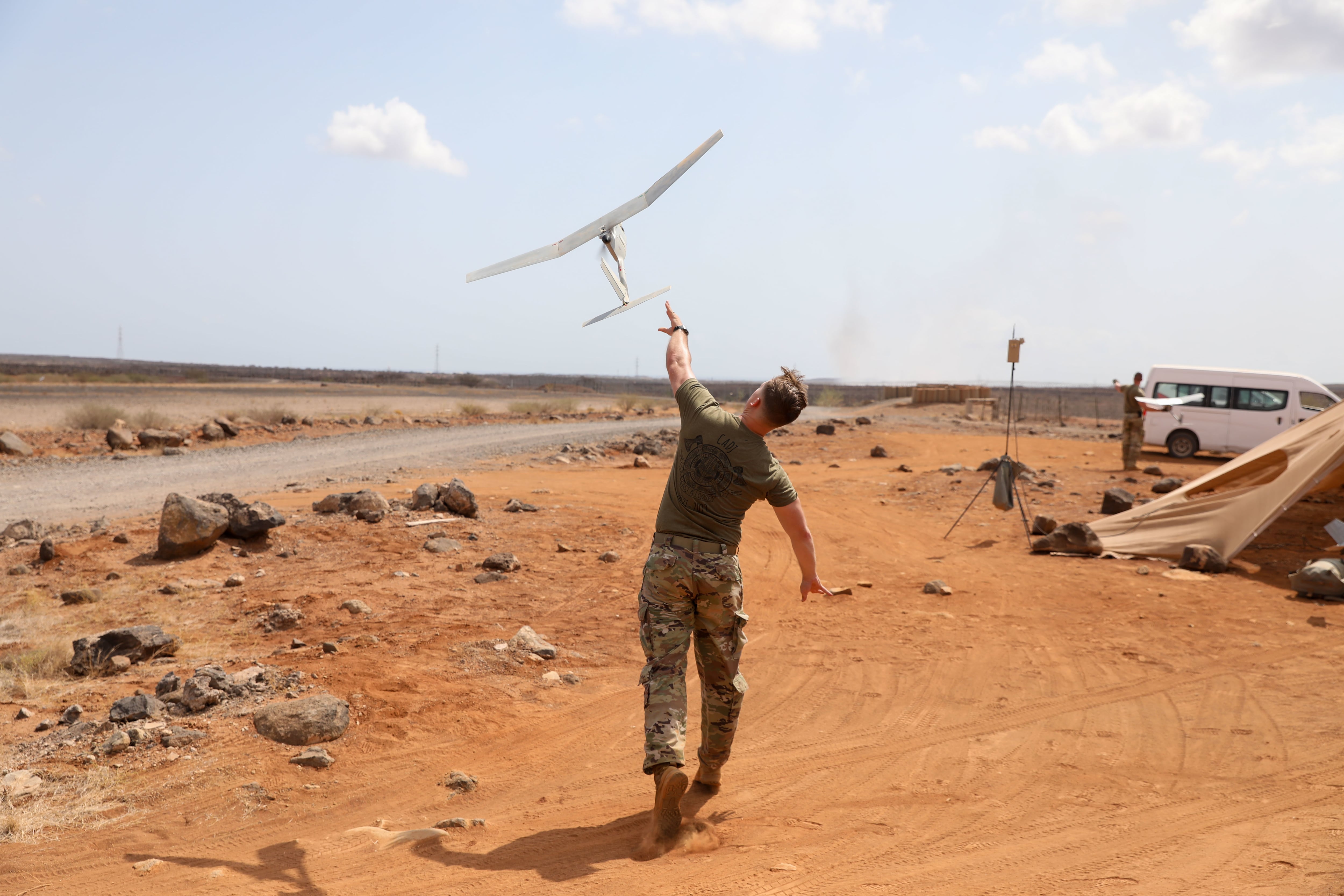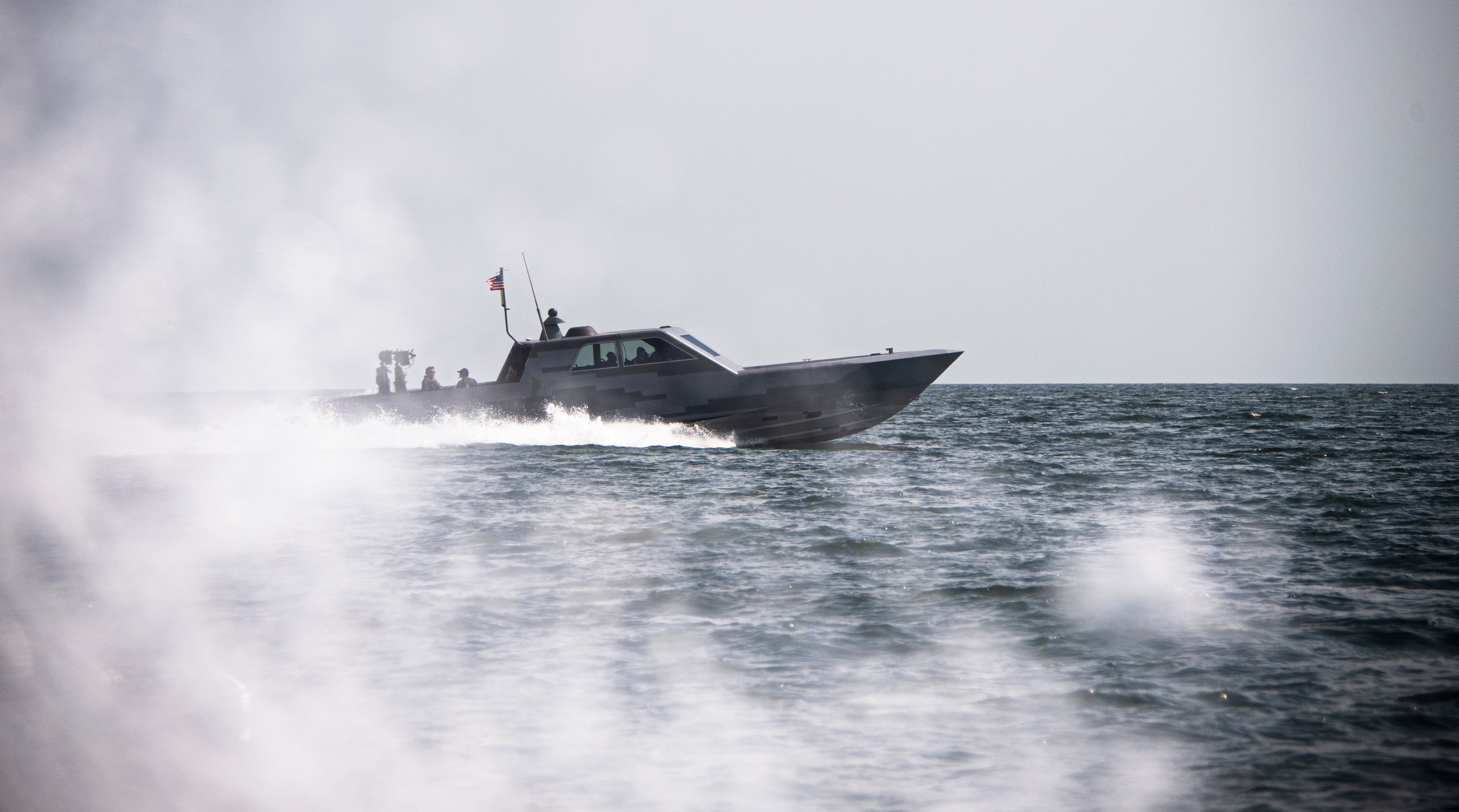TAMPA, Fla. — Navy SEALs have a lot of cool toys, but most of the wet ones either need replacing or need some serious upgrades to haul them into the 21st century.
That was the overriding message from a panel of sailors and civilians who oversee all things maritime for Special Operations Command at the Special Operations Forces Industry Conference held here by the National Defense Industrial Association.
During the May 18 panel, one of the program managers shared a “parable of the Dry Combat Submersible” as a fitting comparison for what Navy special operations are doing with their undersea and surface vessels.
RELATED

The Dry Combat Submersible “is like an electric truck,” said Navy Cmdr. John Conway, program manager for SOF undersea systems. “Sometimes you want to drive around, listen to the radio and make a phone call. Sometimes you want to haul a lot of stuff. You may want to keep your truck for 20 or 30 years, change out the radio, get bigger tires, put on a tow hitch, backup camera or 360-degree camera. We need it all.”
Navy Capt. Randy Slaff, program executive officer for maritime, shared the top two goals for all their platforms – better communications and better power and energy use.
“It’s not just talking to each other — diver to diver, or operator to operator,” Slaff said. “This is diver to craft, craft to host platform.”
That means humans, undersea assets, surface vessels and everything else connected, sharing data and taking directions to help that cold, wet SEAL in the water headed to or returning from a mission.
Navy Cmdr. James Hanlon, program manager for systems with SOF Maritime, laid out the work left for the SEAL Delivery Vehicle MK 11. That vehicle replaces the SDV MK 8 Mod 1, running in one form or another since the early 1980s.
The MK 11 is about to hit initial operating capability this summer, he said. The MK 8 and MK 11 are both wet, open submersibles — mini-submarines that combat divers or SEALs board and ride to near their destination while wearing scuba gear.
“This is still SOF’s only clandestine submersible option,” Hanlon said.
The MK 11 is heavier but it boasts more capabilities, he added. While it’s been in development since a contract was awarded to Teledyne Brown Engineering in Huntsville, Alabama, in 2011, the “next generation” in combat submersible MK 11 isn’t expected to hit full operational capability until fiscal year 2027.
While the initial five boats delivered between 2018 and 2020 were tested and adjusted, he’s looking for more capabilities to plug into the platform — and for other ways to deliver it to the fight.
That’s because large host submarines such as the Ohio-class subs are reaching retirement age. SEALs use standard gray-hull ships and subs to get their smaller vehicles within range. They don’t want to limit their options when the subs go out.
The service is looking at “other nontraditional ways to launch this platform,” Hanlon said. “Whether it’s a containerized solution off of some vessel of opportunity or things like that.”
On the underwater but dry side, the Dry Deck Shelter craft is also reaching its senior status.
Navy Capt. Grady Hill, program executive officer for undersea special mission systems, said the initial 40 vessels built starting in the early 1980s by the company now known as Huntington Ingalls Industries just got a service life extension to push them out to 2051.

Modifications have increased the vessel’s payload capacity by 30% and weight capacity by more than 300% from the original.
SEAL Team 8 is expecting delivery in the coming weeks, he said. They plan to conduct shore testing this year and more testing to conclude next year, he said.
For surface craft, the SEAL teams either already have or are in the process of upgrading all of their boats.
Those upgrades offer more room.
Navy Capt. Rocky Russell, former head of surface craft programs, said though the new Combatant Craft Medium “MK 1″ hit full operational capability this past year and has seen all 30 boats fielded, Navy special operators want more out of the vessel.
The 60-foot boat carries a four-sailor crew and up to 19 passengers ready for combat. It also has significant space to add new weapons and tech.
Russell said the SEALs are “looking to integrate loitering munitions” on the MK 1 and a munition launcher or remote-controlled .50 caliber machine gun.
Todd South has written about crime, courts, government and the military for multiple publications since 2004 and was named a 2014 Pulitzer finalist for a co-written project on witness intimidation. Todd is a Marine veteran of the Iraq War.




